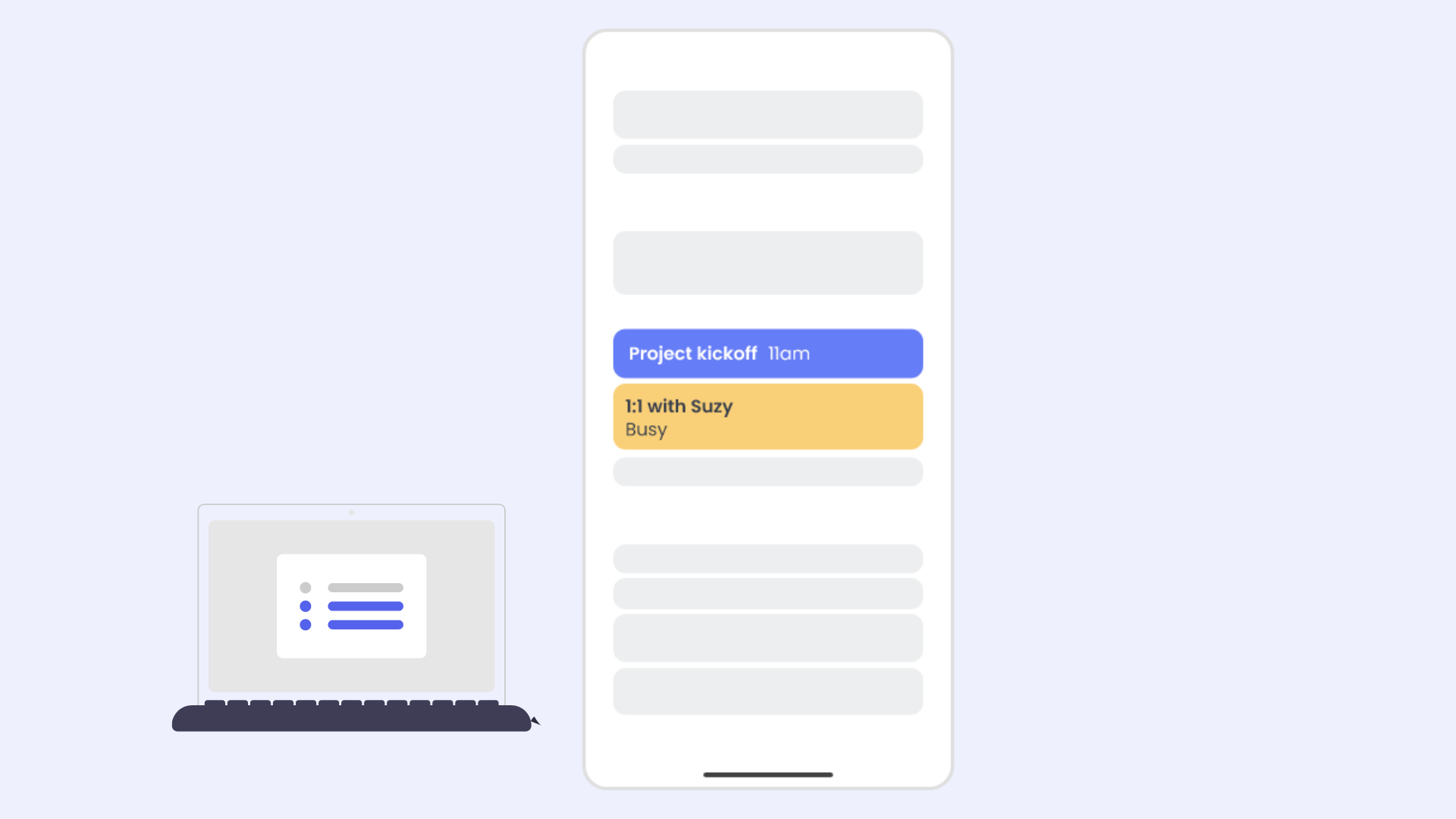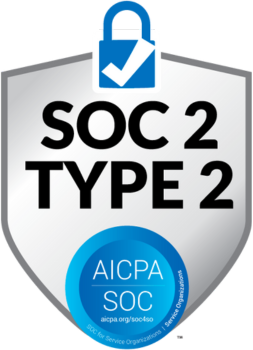

“This meeting could've been an email.”
You've probably thought this or vented to a coworker about it. But when was the last time you took action to cut an unproductive status update on project progress from your calendar?
Most meetings have good intentions, but they're notorious for jamming up schedules and interrupting deep work. If you're suffering from meeting madness where you’re stuck in a room talking about the past week, you're not alone. 71% of senior managers said their meetings were unproductive, and 65% said meetings kept them from getting their own work done.
Fortunately, there's a solution — and it's more strategic than hitting “decline” on your next calendar invite — a weekly status report. A weekly report allows individual team members to asynchronously summarize their weekly activity, questions, and comments on a shared platform – so your team can spend less time in meetings, and more time focusing on the tasks they need to be prioritizing.
In this tutorial, learn how to write a weekly status report, which meetings to cancel, and how to strategically replace them with weekly reporting to improve productivity across your team.
What are weekly status reports?
For many of us, each week is a whirlwind of tasks, meetings, and deadlines – making it difficult to keep everyone on the same page, track project progress, and identify potential roadblocks across the team. While many teams use recurring meetings to try to manage these workload challenges, this is often unnecessary and counterproductive. Too many meetings result in a 48.2% burnout rate for employees, and make it difficult for people to get enough focus time for their task work.
But a weekly status report can be a nice, happy medium to balance communication and productivity.
A weekly status report is an overview of what you accomplished this week, including tasks completed, open projects, and plans for next week. These status updates help teams stay on track of their project management goals, surface challenges, and roadblocks, and allow managers to see how they can better support their team members..
Benefits of weekly status reports
Using weekly status reports throughout your projects offers many benefits. Here are some of the key advantages:
- More time for work: Give employees more time for their actual work by eliminating unproductive status meetings from the calendar.
- Improve transparency: Keep everyone up to speed on which tasks you’ve completed, project challenges, and weekly goals.
- Increase accountability: Encourage team member ownership and responsibility over tasks, progress, and goals.
- Streamline communication: Improve communication between managers and team members through easy status reports vs. unnecessary meetings and scattered discussions.
- Faster decision-making: Quickly access the data you need to evaluate progress, assess risks, and make timely decisions.
- Identify challenges: Discover issues and roadblocks directly from team members, and prevent them from escalating into major problems.
- Better planning: Improve planning for both managers and team members by analyzing weekly performance, and putting together an overview of what to focus on next week.
How to write a weekly status report
Writing an effective WSR isn't just about listing tasks; it's about communicating progress, challenges, and plans with precision and clarity.
1. Start with a clear structure
Begin your weekly status report with a consistent structure that includes the key sections you need to monitor progress for on a weekly basis. By having a well-organized template for your weekly status reports, you can save time reviewing them every week while also gathering the information you need to support your team. Here are some common examples of weekly status report template sections:
- Overview: Employee, time period, project, and manager
- Statuses: Activities completed this week
- Plans for next week: Goals for upcoming week
- Risks & roadblocks: What’s slowing down your progress
- Highlights & key takeaways: Significant achievements or milestones
- Additional comments: Feedback or suggestions on weekly performance
If you don't know where to start, feel free to use our weekly status report template below.
2. Be concise, but comprehensive
Clarity and brevity are your best friends when writing your weekly status report. Avoid lengthy explanations and jargon. Instead, focus on providing a concise yet comprehensive snapshot of the week's activities. Use bullet points, short paragraphs, and headers to break up the text and make it easy to skim. If applicable, include relevant data and metrics that offer insights into the project's performance. This could involve key performance indicators (KPIs), timelines, or budget updates.
3. Highlight key achievements
Celebrate your wins! This is where you highlight the major milestones, tasks completed, or goals met during the past week. It's your opportunity to showcase progress and celebrate victories. Use specific examples and quantifiable results whenever possible. This not only showcases progress but also demonstrates your team's effectiveness.
4. Address challenges honestly
Every project faces its share of hurdles. Don't sweep challenges under the rug. Be candid about any obstacles encountered during the week. Describe the issue, its impact, and any steps taken or planned to address it. Transparency in acknowledging challenges helps build trust and enables timely problem-solving.
5. Outline clear next steps
While you’ll want to communicate what happened in the past week, also provide a roadmap for the following week. What are your team's priorities? What tasks need to be completed? What are the deadlines? Clarity on future plans helps align everyone's efforts and expectations.
Free weekly project status report template
Want to save some time implementing a weekly status report for your team? Here’s a free weekly status report template that can be customized for any team or project:

Implementing weekly status reports with your team
Step 1: Identify meetings to replace with status reports
As your organization grows and becomes more complex, you have to become more intentional about deciding which meetings are effective, and which are pointless. The average employee sits through 25.6 hours of meetings/week, and Atlassian notes that employees lose as many as 31 hours/month to unproductive meetings. Just think what your team could do with that time: reclaim nights and weekends, get ahead on next week's agenda, invest in personal development – the options are endless.
Here are a couple of methods you can use to gauge the efficacy of your meetings:
Use anonymous surveys
Conducting surveys can give you an objective understanding of how employees feel about meeting frequency and duration. Best of all, you and your fellow employees can fill them out anonymously so nobody has to worry about what the manager thinks of your opinions.
Here are some good questions you can include in your meeting survey template:
- If this meeting didn't exist, what would you expect to use as an alternative?
- Overall, does this meeting tend to sap your energy or contribute to it?
- What do you think the purpose of this meeting is?
- On a scale of 1-5, how well does this meeting serve its intended purpose?
- Do you think this meeting is the only forum where [insert topic here] gets discussed, or are there other places where it happens as well?
Track time across your team
So how much time do employees have to focus on productive work vs. sitting in meetings? It’s super easy to analyze your team's time through their calendars alone with a time-tracking app like Reclaim.ai. Get a breakdown of time on tasks and habits, deep work vs. shallow work, time across different meeting types, and key work-life balance stats to see how simply moving to asynchronous weekly status reports can boost productivity and happiness across your team.So instead of defaulting to "we need to get everyone in a room to figure out this problem!", you can keep everyone ahead of issues by outlining progress and blockers through simple weekly status report updates.
Ask for informal feedback
If you want to be less formal, simply ask employees whether they think the meetings they attend are truly beneficial, and if not, what they suggest as an alternative.
Here's one useful question: If this meeting didn't exist, would you want or need an alternative? If the answer is yes, follow up with What would that alternative look like?
Keep in mind: the goal isn't to eliminate meetings altogether, but to reframe their purpose as “something that realistically can’t be done asynchronously.”
Product demos, working sessions, and even standups are reasonable because they tend to be either a) short and sweet or b) geared towards a specific outcome or deliverable. But a 50-VP meeting to just "Review In-Flight Engineering Work" is an example of an antipattern you want to eliminate.
Step 2: Choose a weekly report template
There are a couple different weekly status report template styles you can use to provide updates and monitor your teams performance and activity in place of meetings:
Document & project management tool templates
Many status meetings can be replaced by simply having each member of your team complete a weekly report. These templates summarize all of the work completed during the week, and how these activities contributed to the team's priorities and goals. You can use a document or project management tool such as these for your weekly report template:
Weekly reports need to be simple enough that organizations and teams stick to them. If they become too complex and cumbersome, they don't get written or reviewed often enough, and you inevitably fall back to meetings. Take Zapier, for example. Before their meetings, each employee writes a short note about what they're working on in a shared Google Doc. Here are some of their prompts:
- Things I said I'd do this week and their results
- Issues that came up
- Things I'm doing next week
“Information sharing happens more efficiently via written word,” says Zapier CEO Wade Foster. “Another benefit is that it's documented if it's needed later.”
Asynchronous video templates
When you need to talk your team through updates, you can record a short video, share it with your team to watch when convenient, and then (if necessary) use live meeting time to discuss or ask questions. While not the best template for weekly status reports, video recordings are perfect for team updates, especially product demos, as they can help you:
- Asynchronously screen record and explain your issue
- Share and get feedback at a convenient time for coworkers
For example, a product demo might only need a product manager, engineering manager, designer, and the product team. You can record that demo and distribute it to a broader audience so everyone can get up to speed on your progress without actually having to get people together for a much bigger meeting.
Some good asynchronous video tools to consider for your video update template include:
Asynchronous videos allow people to retain as much time as possible for deep work and ensure every minute of a meeting is dedicated to active problem solving, not digesting information.
Step 3: Create an easy-to-adopt plan to keep everyone accountable
Asynchronous weekly reports are only as effective as the processes you use to keep them up and running. To keep everyone accountable, managers have to set clear expectations for how and when reports are completed. So if your team hits the ground running every Monday morning, collect weekly status reports every Friday morning so you have time to review before the start of next week.
One easy way to ensure reports are submitted on time is with Reclaim's Weekly Status Habit, a free time-blocking tool for Google Calendar that automatically finds the best time in your schedule for your recurring routines so you never have to worry about falling off track.
If your weekly reports include subjective responses (“How are you going to handle the client's budget restrictions?”), it's crucial to have rules for clarity and thoroughness. Jeff Bezos implemented a management technique at Amazon where employees had to write down their ideas in full sentences to minimize questions and keep everyone on the same page.
“Full sentences are harder to write,” said Bezos. “They have verbs. The paragraphs have topic sentences. There is no way to write a six-page, narratively structured memo and not have clear thinking.”
You definitely don't need your employees writing six-page memos every week. The point is you need to extract clear, logical information without wasting time. There are really only several questions a good weekly status report template needs to include, and all are focused around the Three Ps -- Progress, Problems, Priorities:
- TLDR: quick summary of how things went that week, and what's on tap for next week.
- Priorities: a reminder of what your top 3-5 priorities are over the next several weeks to months.
- Progress: progress that you made against those priorities, and any other miscellaneous stuff you want to mention.
- Problems: blockers and issues that are preventing you from making progress on key priorities.
- Next week: what you plan to accomplish next week on your priorities, and any plans for clearing obstacles.
The first item, priorities, is incredibly important as an anchor. If you receive weekly status reports that are essentially long lists of tasks, you're missing the key element. Tasks matter, but they lack a clear tie-in to the objectives that are most important to the organization and the individual.
Weekly Reports should be 1-2 pages at most. Sometimes longer, sometimes shorter, but they need to be simple so they actually get reviewed and written consistently.
Keep your team on track with weekly status reports 📝
These days, effective communication and transparency are non-negotiable, and weekly status reports serve as a reliable compass to help your teams and projects stay on track.
By using regular weekly reporting, you're not just documenting progress — you're creating a culture of accountability, transparency, and informed decision-making while establishing an environment where every team member can take ownership of their tasks and leadership has the right data at their fingertips.
Weekly status reports minimize the need for endless meetings and email chains, allowing you to focus on what truly matters — productive work and achieving your project's goals.
Trend Reports
Ready for an AI calendar?
Auto-schedule your tasks, habits, breaks, & meetings on Google Calendar.
Start scheduling →It's free! 🎉












.svg)
.svg)
.svg)
.svg)
.svg)


